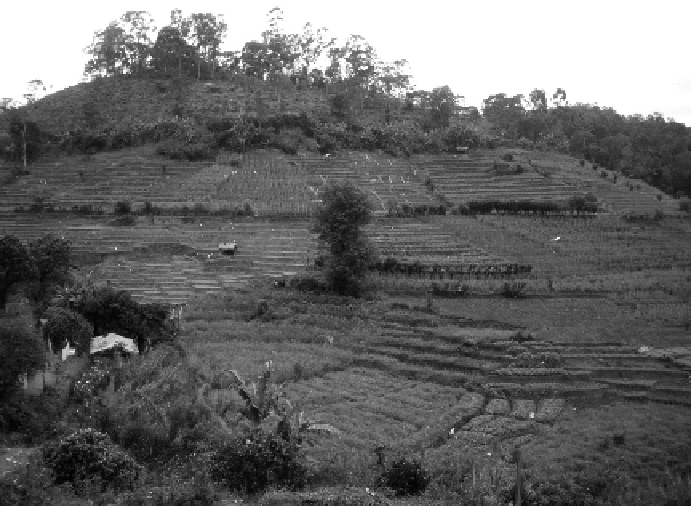Geoscience Reference
In-Depth Information
Figure 15.3.
Vegetable production near Nuwara Eliya (Breuste 2010).
Drivers of Change in Central Highlands of Sri Lanka
Climate change
According to current predictions for Sri Lanka, the effects of climate change
by 2050 will be marginal, reaching only +0.50°C temperature increase
and +5% evaporation/rainfall (wet season only) in the large scenario
(Yogaratnam 2010). Central Highlands studies have also revealed that the
amount of rainfall on the eastern and western slope of the area increases
with the altitude to a maximum at a height of about 1,000 m; further up
it decreases (Nianthi 2005). These trends show that within the average,
the intensity of dry weather and rainfall may increase. Therefore, climate
change could have increasingly signifi cant effects in the scenario for 2070.
Studies on weather patterns and crop yields for the past years (Ratnasiri et
al. 2008, Yogaratnam 2010) have shown that drought affects tea by reducing
the yields. Direct impacts will result from increased carbon dioxide levels,
which affect photosynthesis and rising temperatures which, in turn, cause
heat stress and increased evapotranspiration in crops. Indirect impacts will

Search WWH ::

Custom Search